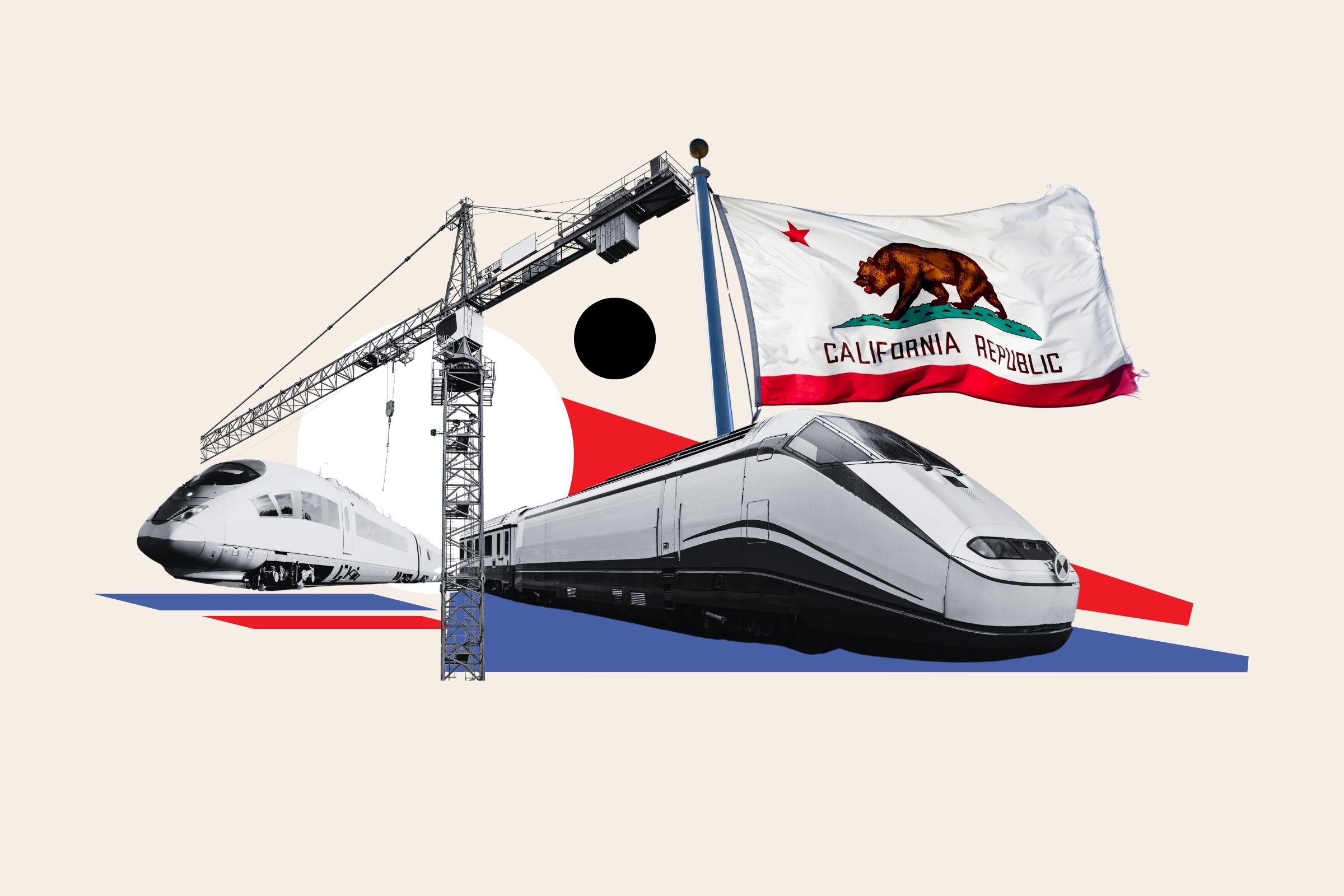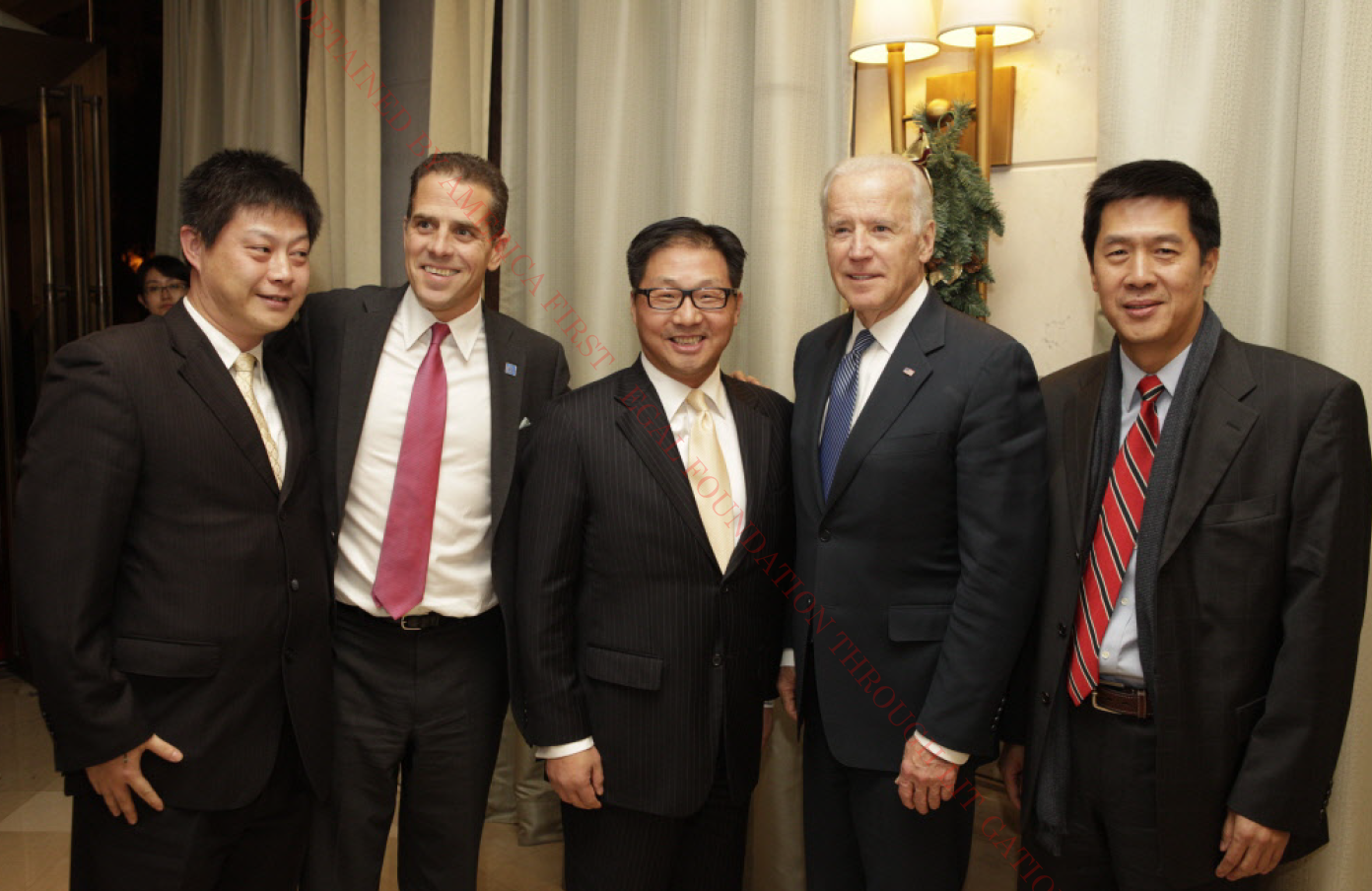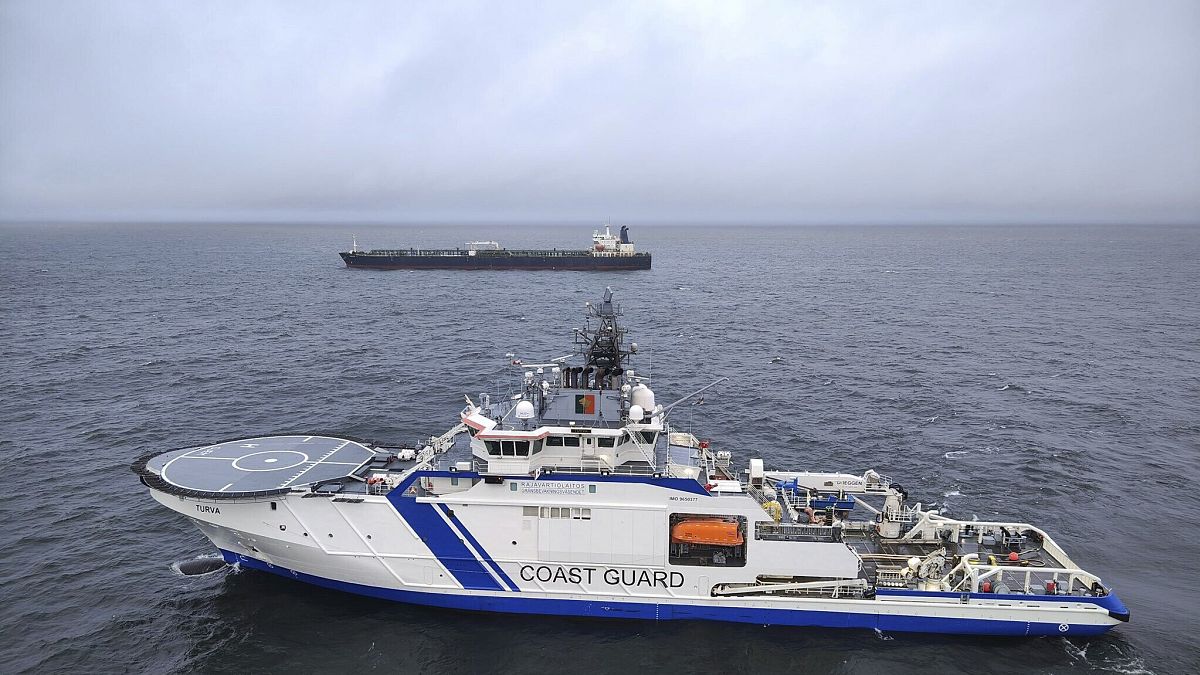California
California, truck manufacturers strike deal on zero-emission plan

California and some of the nation’s biggest truck manufacturers have reached an agreement aimed at smoothening the industry’s transition to 100 percent zero-emission sales by 2036.
The plan announced Thursday incorporates measures that help the trucking industry meet California’s emissions requirements while enabling the state to simultaneously reach its climate goals, according to those involved.
In striking this compromise, the state averts a potential legal battle with major truck manufacturers, who have long been challenging California’s unmatched emissions requirements as technologically and economically unfeasible.
“Today, truck manufacturers join our urgent efforts to slash air pollution, showing the rest of the country that we can both cut dangerous pollution and build the economy of the future,” Gov. Gavin Newsom (D) said in a statement.
The Clean Truck Partnership, a joint initiative of the California Air Resources Board (CARB) and the Truck and Engine Manufacturers Association, includes the industry’s biggest players: Cummins Inc.; Daimler Truck North America; Ford Motor Company; General Motors Company; Hino Motors Limited Inc.; Izuzu Technical Center of America Inc.; Navistar Inc.; Stellantis N.V.; and Volvo Group North America.
Among the terms of the agreement is a commitment on CARB’s part to align with the Environmental Protection Agency’s (EPA) 2027 regulations for nitrogen oxide emissions — regulations that are less stringent than those promoted by California.
The EPA’s rule, cemented in December, aims to cut nitrogen oxide emissions by 50 percent by 2045 — a weaker rendition of a previous version that would have cut this type of pollution by about 60 percent in the same period.
In 2020, California’s regulatory body adopted first-of-their-kind rules that sought to expedite the transition of diesel trucks and vans to zero-emission models and reduce nitrogen oxide emissions.
Through these measures, 40 percent of tractor trailers, 55 percent of small trucks and 75 percent of heavy trucks and vans sold in California by 2035 would need to be zero-emission. But already by 2024, 5 percent of trailers, 5 percent of small trucks and 9 percent of heavy trucks would need to meet such standards.
The Golden State, which typically leads other states on pollution regulation, had applied to the EPA for a special waiver to enforce these rules because the Clean Air Act prohibits states from implementing their own emissions standards.
Members of the Truck and Engine Manufacturers Association have vehemently opposed California’s request, stressing that while they “support a program that can be a successful bridge to a zero-emission commercial vehicle future,” that plan “is not technologically feasible.”
As part of the deal announced Thursday, California’s regulatory body has agreed to modify elements of its 2024 nitrogen oxide emission regulations, while manufacturers will provide offsets to maintain the state’s emission targets.
CARB also committed to providing no less than four years of lead time and at least three years of regulatory stability before imposing the zero-emission requirements.
“This agreement makes it clear that we have shared goals to tackle pollution and climate change and to ensure the success of the truck owners and operators who provide critical services to California’s economy,” CARB Chairwoman Liane Randolph said in a statement.
For their part, truck manufacturers agreed to meet the state regulator’s zero-emission and pollutant standards within the state, regardless of any attempts by other entities to challenge California’s authority.
Jed Mandel, president of the Truck and Engine Manufacturers Association, on Thursday touted his organization’s “longstanding commitment to reducing emissions” and the potential to “work together to achieve shared clean air goals.”
“Through this agreement, we have aligned on a single nationwide nitrogen oxide emissions standard, secured needed lead time and stability for manufacturers, and agreed on regulatory changes that will ensure continued availability of commercial vehicles,” Mandel said in a statement.
Copyright 2023 Nexstar Media Inc. All rights reserved. This material may not be published, broadcast, rewritten, or redistributed.

California
Scientists document carnivorous squirrels in California who hunt voles : Short Wave

Squirrels are omnivores, eating nuts, fruit, small insects — and according to a study published in the Journal of Ethology — voles.
Sonja Wild, UC Davis
hide caption
toggle caption
Sonja Wild, UC Davis

Squirrels are omnivores, eating nuts, fruit, small insects — and according to a study published in the Journal of Ethology — voles.
Sonja Wild, UC Davis
Squirrels are on the hunt in the California Bay Area.
Their target: local voles.
In a study published in the Journal of Ethology, a group of California ground squirrels were found hunting, killing and eating a vole. Lead researcher and behavioral ecologist Jennifer Smith from the University of Wisconsin, Eau Claire says her team witnessed this behavior in the twelfth year of a long term study.
The local vole population boomed this year. It was five to six times bigger than normal, Smith says the squirrels took advantage of that.
But this behavior is not new. “There’s been accumulating evidence of one or two events within a species of a red squirrel taking a sparrow,” she says, also noting, “They tend to go, try to take chickens.”
But these accounts have been thought to be one-offs, generally.
With this study, the squirrels’ entire process was captured via video — and shown to be a regular part of these squirrels’ behavior.
Listen to Short Wave on Spotify and Apple Podcasts.
Listen to every episode of Short Wave sponsor-free and support our work at NPR by signing up for Short Wave+ at plus.npr.org/shortwave.
This episode was produced by Rachel Carlson and Jordan-Marie Smith and edited by Rebecca Ramirez, Christopher Intagliata and Ashley Brown. Tyler Jones checked the facts.
California
Top 25 California high school boys basketball rankings (12/26/2024)

The week between Christmas and New Year’s Day is always revealing for the best boys basketball teams in California and final days of the 2024 calendar year should be no different.
The Damien Classic and Torrey Pines Holiday Classic always present a window of what is in store for the rest of the season and separates the contenders and pretenders. Next weekend at the HoopHall Classic West in Gilbert (Ariz.), Jan. 2-4, will also give the elite teams time to strut their stuff.
There are nine teams among California’s Top 25 still unbeaten at Christmas, a pretty high number, including top-ranked St. John Bosco, No. 6 Riordan and No. 8 De La Salle and No. 9 Montgomery.
Note: Only teams that play for a CIF State California title were considered for this rankings, thus eliminating Prolific Prep of Napa Christian, which can and will play for a mythical national title. Notes and rankings below from Southern Section teams supplied by SBLive’s Tarek Fattal.
The Braves win their Trinity League opener over Orange Lutheran without Brandon McCoy and Elzie Harrington. Christian Collins and Max Ellis led the way. Next up: Platinum Division in Classic at Damien.
Roosevelt wins the Tarkanian Classic in Las Vegas, beating Notre Dame/Sherman Oaks in the final. Brayden Burries scored 26 points and Issac Williamson had 19.
Nik Khamenia notches 26 points, 10 rebounds and eight assists in a convincing win over JSerra, a team expected to earn an Open Division berth.
Notre Dame suffers its first loss in the Tarkanian Classic final to Roosevelt despite Tyran Stokes scoring 20 points. Lino Mark played just four minutes in an attempt to play while injured. (TYRAN STOKES DEBUT)
Four more wins started with 90-65 blowout of defending state D2 champion Oakland Tech behind 33 points and 10 points from Tounde Yessoufou, and a combined 45 from Julius and Malcolm Price along with Gunner Morinini. Yessoufou is averaging 29.8 points and 7.7 rebounds per game.
Won the Gridley Classic with wins over Branson (68-27), Clovis North (54-52) and previous No. 6 Salesian (52-51) thanks in part to tournament MVP Andrew Hilman (19 points). Texas Tech-bound Jasir Rencher and Irvine signee Nex Emeneke was also All-Tourney.
Pride lost their first regular-season game since 2022, 52-51 to Riordan, in finals of the Gridley Classic. Salesian missed two free throws with 1.2 seconds to play.
Win over Santa Margarita (61-57) to win the Vountour Classic was team’s most impressive. David Balogun, a rapidly improving 6-6 post, scored 29 to lead the way. Since then breathers over Mountain House (67-35), La Salle (76-26) and Sacred Heart Cathedral (79-39).
The Aztecs from San Diego won five games last week, including four at the Tarkanian Classic to take the Nike Division championship behind division’s Most Outstanding Player J.J. Sanchez, who had 22 points in the finals.
Eagles’ only loss comes this week to unbeaten NorCal power De La Salle, but bounces back with a win over Murrieta Valley.
Trailblazers beat Millikan 87-33 this past week.
The Lions get a taste of Open Division-level hoops in a 65-50 loss to Harvard-Westlake.
Redondo Union is picking up Open Division playoff buzz.
La Mirada has been idle since Dec. 14.
Coach Paul Tait is enthused by the play of sophomore point guard Dominic Loehle.
After lopsided win over St. Augustine (77-54), recorded tough wins over Sage Creek (75-66), Mission Hills (67-59) and La Jolla Country Day (80-68).
Monarchs have won five of their last six.
Pius went 2-2 at the Tarkanian Classic.
Jasone Crowe Jr. is averaging 37 points per game.
Had won four straight before losing 63-54 to Brophy College Prep of Phoenix Ariz. (63-54).
Quality win over Pacifica Christian of Orange County without Jeremiah Hampton was impressive. JJ Harris and Louis Bond impressed.
Canyon has won five straight. Brandon Benjamin averaging 30+ points a game.
Damien without big man Nate Garcia (injured).
Twelve straight wins isn’t a bad way to start the season. Defense a big key, holding opponents under 50 seven times, including three straight games limiting opponents to 49 in wins over Riverside poly (61-49), Salesian Los Angeles (93-49) and Wiseburn-Da Vinci (61-49).
Cougars last win came against Long Beach Poly on Dec. 14.
California
California has 15 of 25 priciest places to live in US

No. 1 San Francisco costs 18.2% more than typical US metro. No. 2 LA-OC is 15.5% more expensive.
Subscribe to continue reading this article.
Already subscribed? To login in, click here.
Originally Published:
-
/cdn.vox-cdn.com/uploads/chorus_asset/file/24924653/236780_Google_AntiTrust_Trial_Custom_Art_CVirginia__0003_1.png)
/cdn.vox-cdn.com/uploads/chorus_asset/file/24924653/236780_Google_AntiTrust_Trial_Custom_Art_CVirginia__0003_1.png) Technology6 days ago
Technology6 days agoGoogle’s counteroffer to the government trying to break it up is unbundling Android apps
-

 News1 week ago
News1 week agoNovo Nordisk shares tumble as weight-loss drug trial data disappoints
-

 Politics1 week ago
Politics1 week agoIllegal immigrant sexually abused child in the U.S. after being removed from the country five times
-

 Entertainment1 week ago
Entertainment1 week ago'It's a little holiday gift': Inside the Weeknd's free Santa Monica show for his biggest fans
-

 Lifestyle1 week ago
Lifestyle1 week agoThink you can't dance? Get up and try these tips in our comic. We dare you!
-
/cdn.vox-cdn.com/uploads/chorus_asset/file/25672934/Metaphor_Key_Art_Horizontal.png)
/cdn.vox-cdn.com/uploads/chorus_asset/file/25672934/Metaphor_Key_Art_Horizontal.png) Technology3 days ago
Technology3 days agoThere’s a reason Metaphor: ReFantanzio’s battle music sounds as cool as it does
-

 Technology1 week ago
Technology1 week agoFox News AI Newsletter: OpenAI responds to Elon Musk's lawsuit
-

 News4 days ago
News4 days agoFrance’s new premier selects Eric Lombard as finance minister


















